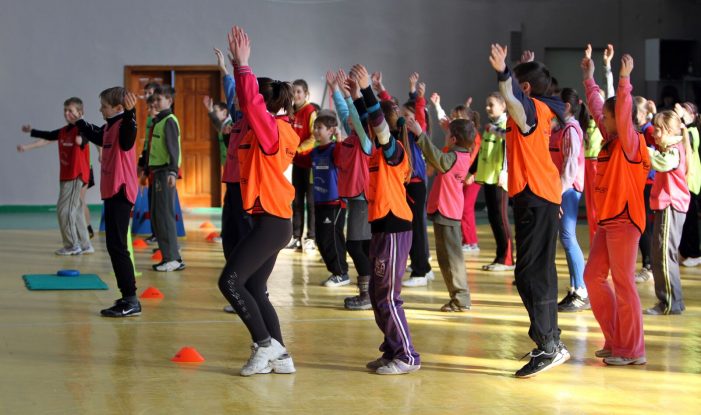
Michigan Fitness Foundation
Can you change a school’s culture from the inside?
More than 50 Supplemental Nutrition Assistance Program Education (SNAP-Ed) partners believe it is possible and are committed to providing comprehensive school-wide programs designed to teach kids healthy habits and address childhood obesity.
There’s no one-size-fits-all strategy. The goal is to tailor resources with the individual needs of each school.
“Each program is unique,” says Dr. Kathleen Cullinen, Evaluation Specialist & Public Health Fellowship Director at the Michigan Fitness Foundation (MFF), one of the partners. “It’s unique depending on the infrastructure, school and community environments, and experience with healthy programming.”
SNAP-Ed is ultimately a partnership between MFF, more than 50 MFF Network partners, Michigan State University Extension, the Michigan Department of Health and Human Services (MDHHS) and the United States Department of Agriculture. Other groups such as Blue Cross Blue Shield of Michigan, the Michigan Health Endowment Fund, United Ways, and other state and local non-profits also partner in various elements of this work.
The school-based components of healthy community interventions depend on engagement between students educators and administrators using focused interventions that are culturally relevant.
“We’re able to work together and invest together in communities, schools and in the health of children to make a bigger impact.” – Dr. Marci Scott, Vice President for Health Programs, Michigan Fitness Foundation Photo Courtesy of Michigan Fitness Foundation
The effectiveness of both school and community programs is reviewed by teams of evaluators at MFF and other SNAP-Ed partners along with independent consultants. For the elementary school programs, evaluators utilize a blend of in-person and online surveys to collect much of the data, including pre- and post-surveys of students, teachers and parents.
“Partnering allows a greater collective impact,” says Dr. Marci Scott, vice president for health programs at MFF. “Not only are we sharing our expertise in evolving all of the programming together, but we’re actually leveraging funds. We’re able to work together and invest together in communities, schools and in the health of children to make a bigger impact.”

WHAT SNAP-ED DOES
Launched in 1990 by the United States Department of Agriculture as a nationwide program, there are SNAP-Ed programs in elementary, middle, and high schools. Depending on specific circumstances, successful pilots can be scaled up to reach more schools and communities and have a larger impact on the state of Michigan.
Although SNAP-Ed has been around for more than two decades, nutritional awareness is still a factor. Most parents tend to learn about the program through different school communication methods like newsletters and email. In addition, many schools host events with health themes, which provide parents another opportunity to see SNAP-Ed in action.
“Kids are naturally involved in the program because it is integrated fully into the school environment,” Cullinen says. “They participate in lessons in the classroom and gymnasium. Experiential learning opportunities are build-in through the school day as well as before and after school.”
Some of the programs give the students the opportunity to be part of the student leadership team.“We have learned that students are eager to take what they have learned and put it into practice,” Cullinen says. “The beauty of this program is that the school environment is transformed. Now, students can easily make that healthy choice.”
One outcome of SNAP-ED programming and evaluation is the growing evidence linking healthy eating and physical activity to student achievement. Parents, teachers and administrators are increasingly supportive of the program and report that their children eat healthier at home and are more physically active.


